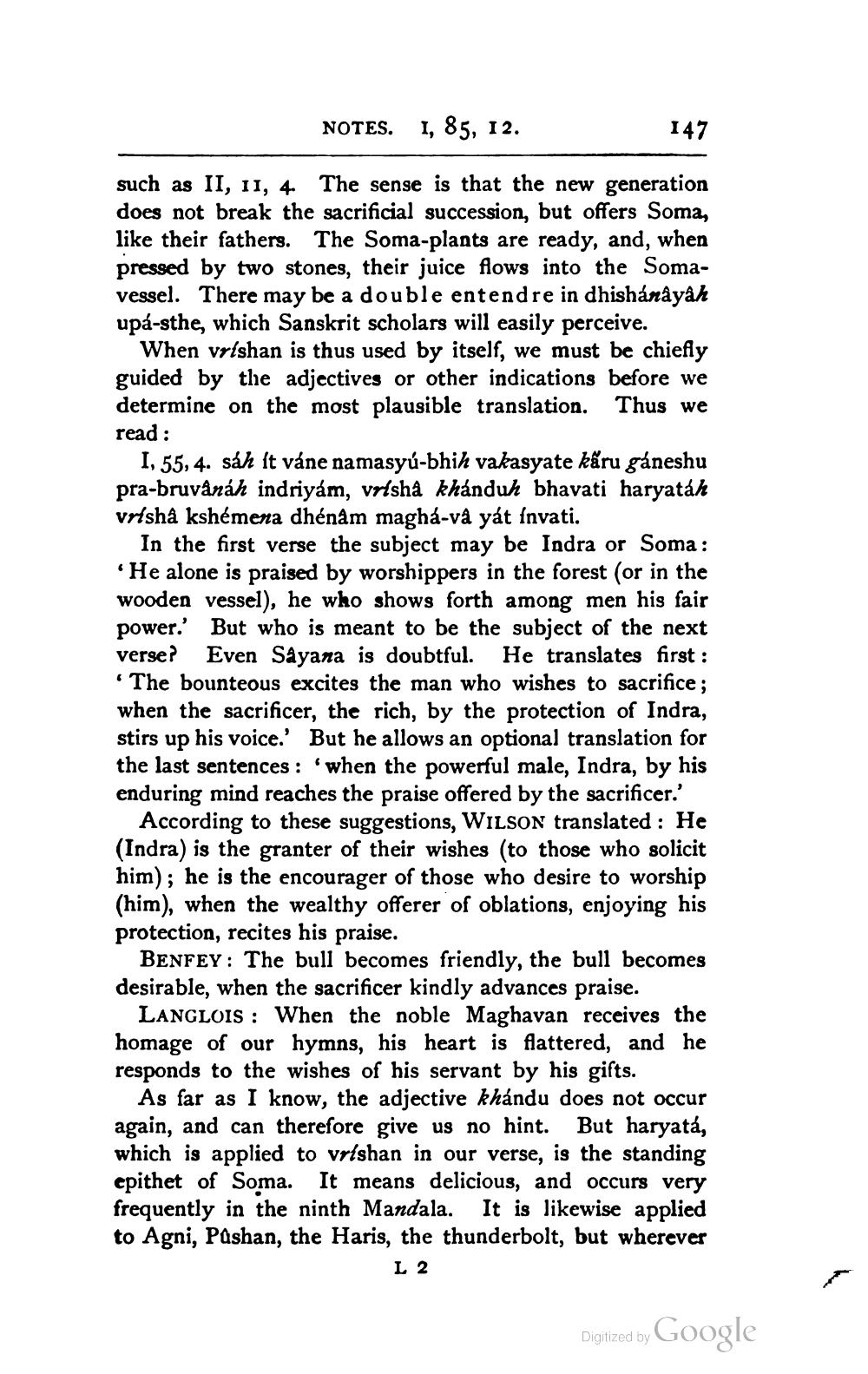________________
NOTES. 1, 85, 12.
147
such as II, II, 4. The sense is that the new generation does not break the sacrificial succession, but offers Soma, like their fathers. The Soma-plants are ready, and, when pressed by two stones, their juice flows into the Somavessel. There may be a double entendre in dhishanayah upá-sthe, which Sanskrit scholars will easily perceive.
When vrlshan is thus used by itself, we must be chiefly guided by the adjectives or other indications before we determine on the most plausible translation. Thus we read : | I, 55, 4. sau ít váne namasyu-bhid valasyate karu ganeshu pra-bruvanáh indriyám, vrlshà khánduh bhavati haryatáh vrisha kshémena dhénam magha-vå yát invati.
In the first verse the subject may be Indra or Soma : • He alone is praised by worshippers in the forest (or in the wooden vessel), he who shows forth among men his fair power. But who is meant to be the subject of the next verse? Even Sayana is doubtful. He translates first : 'The bounteous excites the man who wishes to sacrifice; when the sacrificer, the rich, by the protection of Indra, stirs up his voice.' But he allows an optional translation for the last sentences : when the powerful male, Indra, by his enduring mind reaches the praise offered by the sacrificer.'
According to these suggestions, Wilson translated : He (Indra) is the granter of their wishes (to those who solicit him); he is the encourager of those who desire to worship (him), when the wealthy offerer of oblations, enjoying his protection, recites his praise.
BENFEY: The bull becomes friendly, the bull becomes desirable, when the sacrificer kindly advances praise.
LANGLOIS : When the noble Maghavan receives the homage of our hymns, his heart is flattered, and he responds to the wishes of his servant by his gifts.
As far as I know, the adjective khándu does not occur again, and can therefore give us no hint. But haryatá, which is applied to vrlshan in our verse, is the standing epithet of Soma. It means delicious, and occurs very frequently in the ninth Mandala. It is likewise applied to Agni, Pashan, the Haris, the thunderbolt, but wherever
L2
Digitized by
Digitized by Google




